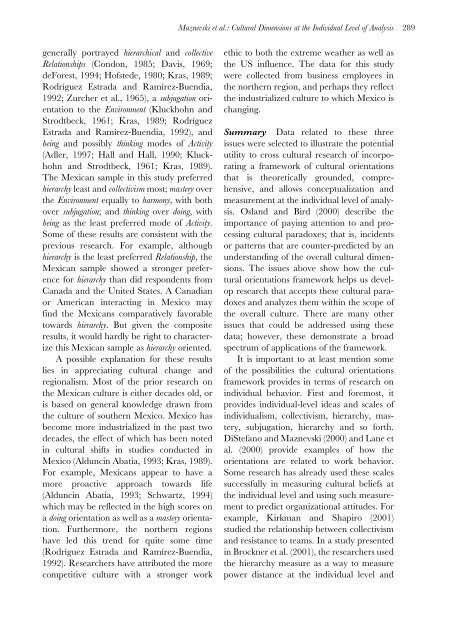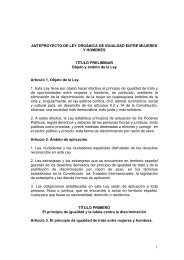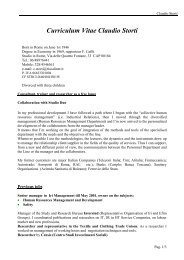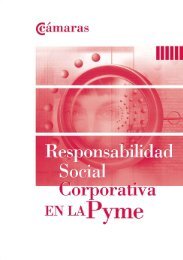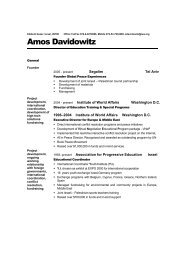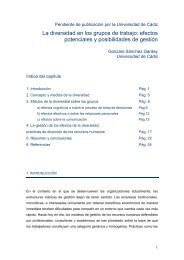Cultural dimensions - IMD
Cultural dimensions - IMD
Cultural dimensions - IMD
Create successful ePaper yourself
Turn your PDF publications into a flip-book with our unique Google optimized e-Paper software.
Maznevski et al.: <strong>Cultural</strong> Dimensions at the Individual Level of Analysis 289generally portrayed hierarchical and collectiveRelationships (Condon, 1985; Davis, 1969;deForest, 1994; Hofstede, 1980; Kras, 1989;Rodríguez Estrada and Ramírez-Buendia,1992; Zurcher et al., 1965), a subjugation orientationto the Environment (Kluckhohn andStrodtbeck, 1961; Kras, 1989; RodríguezEstrada and Ramírez-Buendia, 1992), andbeing and possibly thinking modes of Activity(Adler, 1997; Hall and Hall, 1990; Kluckhohnand Strodtbeck, 1961; Kras, 1989).The Mexican sample in this study preferredhierarchy least and collectivism most; mastery overthe Environment equally to harmony, with bothover subjugation; and thinking over doing, withbeing as the least preferred mode of Activity.Some of these results are consistent with theprevious research. For example, althoughhierarchy is the least preferred Relationship, theMexican sample showed a stronger preferencefor hierarchy than did respondents fromCanada and the United States. A Canadianor American interacting in Mexico mayfind the Mexicans comparatively favorabletowards hierarchy. But given the compositeresults, it would hardly be right to characterizethis Mexican sample as hierarchy oriented.A possible explanation for these resultslies in appreciating cultural change andregionalism. Most of the prior research onthe Mexican culture is either decades old, oris based on general knowledge drawn fromthe culture of southern Mexico. Mexico hasbecome more industrialized in the past twodecades, the effect of which has been notedin cultural shifts in studies conducted inMexico (Alduncin Abatia, 1993; Kras, 1989).For example, Mexicans appear to have amore proactive approach towards life(Alduncin Abatia, 1993; Schwartz, 1994)which may be reflected in the high scores ona doing orientation as well as a mastery orientation.Furthermore, the northern regionshave led this trend for quite some time(Rodríguez Estrada and Ramírez-Buendia,1992). Researchers have attributed the morecompetitive culture with a stronger workethic to both the extreme weather as well asthe US influence. The data for this studywere collected from business employees inthe northern region, and perhaps they reflectthe industrialized culture to which Mexico ischanging.Summary Data related to these threeissues were selected to illustrate the potentialutility to cross cultural research of incorporatinga framework of cultural orientationsthat is theoretically grounded, comprehensive,and allows conceptualization andmeasurement at the individual level of analysis.Osland and Bird (2000) describe theimportance of paying attention to and processingcultural paradoxes; that is, incidentsor patterns that are counter-predicted by anunderstanding of the overall cultural <strong>dimensions</strong>.The issues above show how the culturalorientations framework helps us developresearch that accepts these cultural paradoxesand analyzes them within the scope ofthe overall culture. There are many otherissues that could be addressed using thesedata; however, these demonstrate a broadspectrum of applications of the framework.It is important to at least mention someof the possibilities the cultural orientationsframework provides in terms of research onindividual behavior. First and foremost, itprovides individual-level ideas and scales ofindividualism, collectivism, hierarchy, mastery,subjugation, hierarchy and so forth.DiStefano and Maznevski (2000) and Lane etal. (2000) provide examples of how theorientations are related to work behavior.Some research has already used these scalessuccessfully in measuring cultural beliefs atthe individual level and using such measurementto predict organizational attitudes. Forexample, Kirkman and Shapiro (2001)studied the relationship between collectivismand resistance to teams. In a study presentedin Brockner et al. (2001), the researchers usedthe hierarchy measure as a way to measurepower distance at the individual level and


